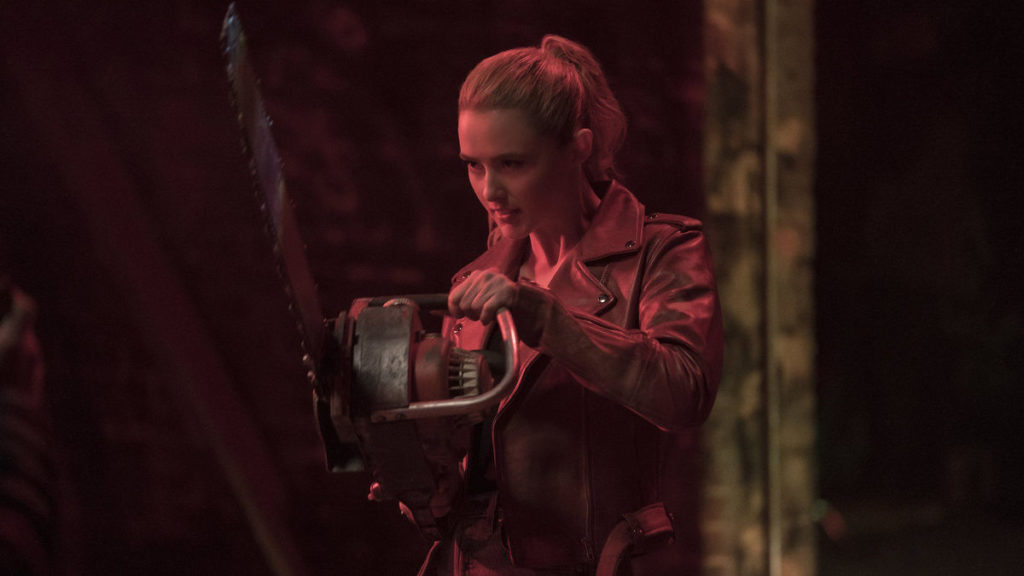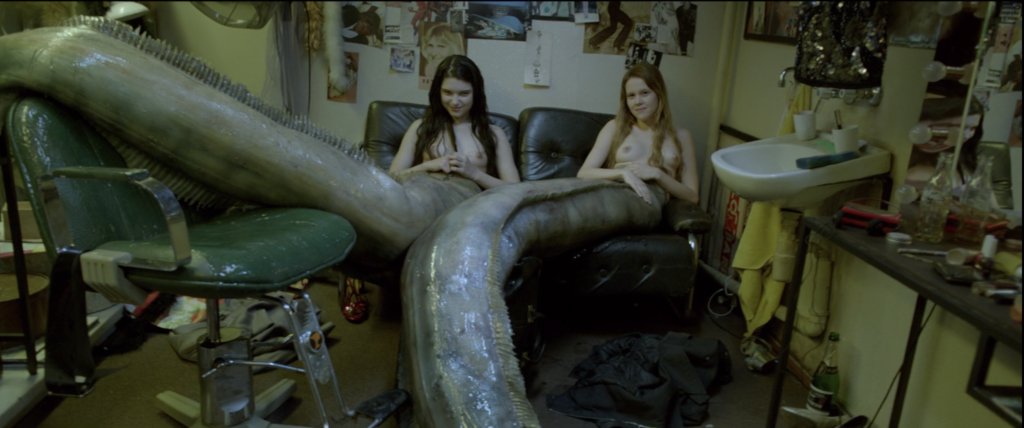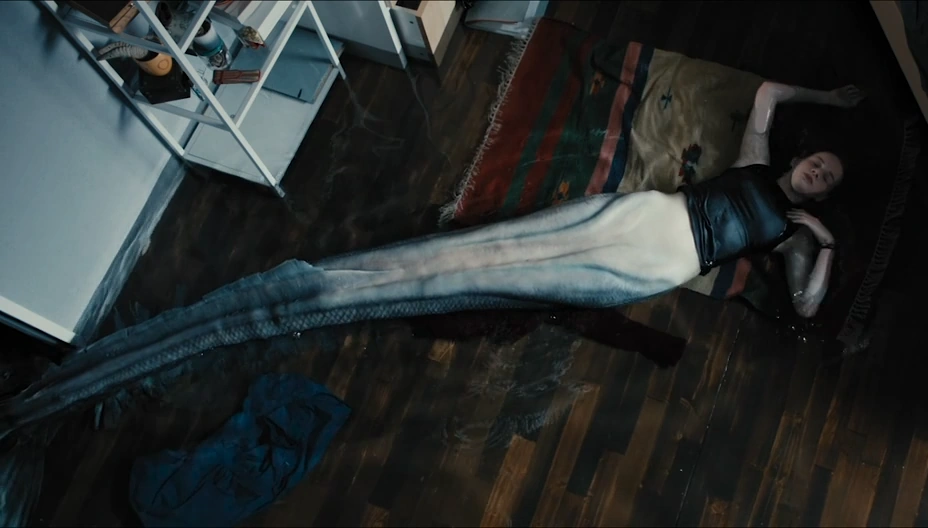San Junipero: Queer Heaven on Earth
Battles will come and go and queer people do die for their identity and fights for rights, but that doesn’t mean the gays don’t deserve their happy endings in stories.
Allegory as a means of telling queer stories isn’t a new approach and for fairly obvious reasons. Until quite recently, explicit nuanced narratives on the LGBTQIA+ experience were difficult to bring to the big screen because historically, it was straight-up banned for decades, and then that got replaced by sparse and stereotypical representation that primarily either villainized queerness or used it for comic relief. So, the go-to mechanism was to subtly include hints of queerness into narratives that other queer people or those versed in reading cinematic texts could pick up on. From Hitchcock’s Rope whose homosexual themes Leon once explored for Incluvie, to the much less subtle nod to othered queerness in the What We Do in the Shadows film I have written about earlier, it has been an accepted norm, especially for queer creatives or even creatives who are allies of the community to include themes and narrative tropes which bear similarities with the common experience of many LGBTQIA+ people. From the experience of being ostracized to the internalized self-hatred born of conditioning in a cis heterosexual world, the experience of monsters like Frankenstein’s monster bear similarities to the queer experience. In fact, the problematic villainized representation of queers often occurred in horror films in the form of antagonists who were queer-coded or explicitly queer individuals like the transvestite Buffalo Bill in Silence of the Lambs.
But not only are some villainous representations being reclaimed, but many in the queer community also relate to the treatment of the monster even when interacting with monster stories that aren’t coded as queer. And in fact, the body horror genre holds a special place in the gender-questioning and transgender community. The experience of feeling trapped in a body that doesn’t seem to be one’s own, and the constant urge to mutilate oneself as a means of self-expression are themes commonly explored in body horror films where the body of the protagonists often even undergo physical transformation along with mutilation. Whether this was intentional or not, these narratives are being interpreted as allegories for the trans experience because non-cis individuals often find visibility in the portrayal of the characters’ relationships with their bodies which can be easily read as metaphorical if not direct, representations of body dysmorphia, a common consequence of gender dysphoria. So in the spirit of Halloween, the following is a list of body horror films that can be more easily interpreted as trans allegories.

‘Freaky’ (2020) dir. Christopher Landon
The most recent of the films feels like the best place to start as Landon’s Freaky involves the literal body-switching of two characters. Named after the classic body-switch film Freaky Friday, it tells the story of serial killer ‘The Butcher’ (Vince Vaughn) as he tries to navigate life inside the body of seventeen-year-old high school teenage girl Millie Kessler (Kathryn Newton). For a slasher, the film’s humour isn’t very macabre and in some ways, it falls in the horror-comedy genre, but it’s the most obvious trans allegory. Feeling misplaced in different bodies with different strengths and sizes, the two characters have to learn the pros and cons of each other’s bodies before they can focus on figuring out how to reverse the magic that switched their bodies. They find a vulnerability with their own selves which they’d not found when occupying their own bodies, and while body dysmorphia is an important theme in the story, it also talks to the merits of finding oneself in a body seemingly alien to oneself which still seems to provide a safe space. It’s a fantasy for many dysmorphic individuals to occupy a different body even for a few hours, and through Freaky viewers get to experience it if only for around an hour and a half.
‘Spring’ (2014) dir. Aaron Moorhead, Justin Benson
A bonafide romantic story, this Indie body horror is a unique exploration of monstrosity. Firstly, it challenges the accepted norm of viewing monsters as villains and features a troubled woman Louise (Nadia Hilker) who is a well-intentioned monster trying her best to control the “monstrous” side of her which threatens to take over and disrupt her regular life. She falls in love with a stranger man Evan (Lou Taylor Pucci) who through a series of misadventures discovers the “monster” living inside Louise. What follows is a story of grappling with an othered identity and a journey of acceptance. Being trans with body dysmorphia can often feel like having this other “abnormal” side that threatens to monstrously derail the direction of one’s life securely established in a cisheteronormative World, which can only be dealt with by performing cis-ness, forcefully denying one’s true nature. The fact that a monster with mutilative capabilities finds herself in the center of a romantic plot makes this film especially endearing to me.

‘The Lure’ (2015) dir. Agnieszka Smoczyńska
Agnieszka’s The Lure is the most explicit monster allegory as the protagonist has no real possibility of passing as an accepted other – she is a mermaid, treated as a monster for her violent capabilities, but simultaneously celebrated for her beauty. As a sisterly love revenge story, it’s quite the perfect narrative on “using” the different nature to win against normative forces that refuse to acknowledge their transgressions. But more importantly, The Lure also addresses in its allegory a unique lesser-acknowledged aspect of the trans experience – the exoticization of gender-bending. Be it the glorification of drag queens or the presentation of transvestites through circus exhibitionism, the world has often paraded dissident and deviant people, and the arc of the mermaids being displayed for beauty while being feared beautifully expresses the paradoxical tone in which cishet people will often applaud drag queens while voting for a man who promises to illegalize they/them pronouns and gender-affirming healthcare.
‘Black Swan’ (2010) dir. Darren Aronofsky
Aronofsky’s most recent film was his most explicitly queer film, but Black Swan, arguably his magnum opus, not only had homoerotic tones in its narrative, it also literally told a story of physical transformation. Mila Kunis and Natalie Portman play rival ballet dancers in the film. While a lesbian sexual tension between them is hinted at, the story mainly focuses on Natalie’s physical transformation into her best self as a dancer. She slowly begins mutilating her body in an attempt to carve out the perfect specimen that her understudy, played by Kunis, won’t be able to replace. The story places emphasis on allowing her to blossom through her transformation and it’s often implied that her destiny is to become her true self, the graceful dancer that’s irreplaceable. If that is indeed her most authentic self, then this body horror film quite obviously functions as a trans allegory. It literally tells the story of a person feeling trapped in and limited by their current body and physical form mutilating herself to transform her body into the form in which she feels safest and most capable.

‘Blue My Mind’ (2017) dir. Lisa Brühlmann
Equally possible to interpret as an allegory for adolescence, the transformation in Blue My Mind happens to a fifteen-year-old girl whose body suddenly begins changing, much to her dismay and horror. The transformation seems permanent and scary, but at the same time, whenever she finds herself in a safe space where she can happily live in this other form, she feels freer than she does in her human body. The feeling of liberation from finding a different physical form is undercut by the fear of being caught, and even if this feels like a stretch, this experience isn’t alien to crossdressers, and people who enjoy expressing their genders physically by challenging the cisheteronormative ideas of gendered wardrobe design. The self-mutilation is difficult to watch, but it perfectly portrays the body dysmorphia experienced from having a body that seems liberating but must be hidden in order to pass as “normal” in the world.
Related lists created by the same author
Battles will come and go and queer people do die for their identity and fights for rights, but that doesn’t mean the gays don’t deserve their happy endings in stories.
Related diversity category
A direct fall into the white savior narrative
Related movie/TV/List/Topic
Two Korean sisters must save their family after a ghost tears the family apart.